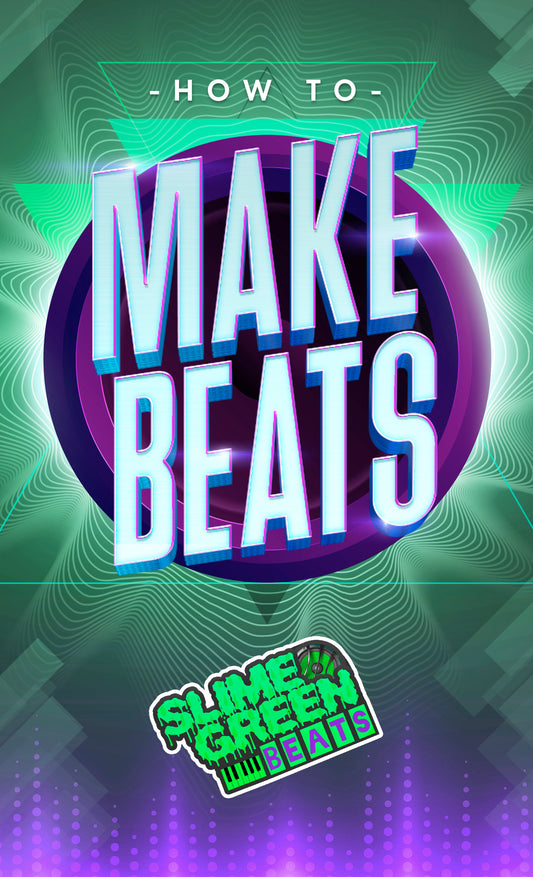If you're diving into FL Studio to start making your own beats, one of the most empowering skills to develop is a basic understanding of music theory. This article is designed to give you the foundational knowledge you need to craft melodies, harmonies, and basslines that sound cohesive and professional. Paired with our video guide, this article will help you apply music theory concepts directly within FL Studio, so you can bring your creative ideas to life.
What Is Music Theory?
Music theory is essentially a guide to understanding the structure of music. From identifying different scales and chords to understanding progressions and rhythm, it provides you with the rules that form the backbone of most music. For FL Studio users, knowing these rules helps you make better decisions when crafting your beats and melodies, especially when building harmonies or adding layers.
By the end of this guide, you'll be equipped with the basics, like understanding notes, scales, chords, and rhythm—all of which are essential for producing solid beats and compelling melodies in FL Studio.
Setting Up in FL Studio: The Basics
Before we dive into music theory concepts, let’s ensure that FL Studio is set up for effective learning and practicing. Open a new project and start by setting your tempo. While hip-hop and trap beats usually hover around 120-160 BPM, feel free to experiment. You can adjust the BPM on the top toolbar in FL Studio.
Then, open the Piano Roll by right-clicking on any instrument in your channel rack and selecting “Piano Roll.” This will be your workspace for creating melodies, chords, and basslines. The Piano Roll is where you’ll apply much of the theory we discuss here.
Notes and Intervals
At the heart of music theory are notes. Each note represents a specific pitch, and FL Studio’s Piano Roll makes it easy to visualize these notes as blocks. The distance between two notes is called an interval.
Some common intervals you’ll encounter include:
- Semitone: The smallest interval in Western music. It’s the distance from one note to the very next note, like from C to C#.
- Whole Tone: Two semitones, such as moving from C to D.
Practice Tip: Start by experimenting with intervals on FL Studio’s Piano Roll. Notice how semitone intervals create a more dissonant, edgy sound, while whole tones often sound smoother.
Scales and Key Signatures
A scale is a series of notes that are played in a specific order. The major and minor scales are the most common and can influence the overall mood of your beat.
-
Major Scale: Known for a happy, bright sound. The formula for a major scale is W-W-H-W-W-W-H (where “W” stands for whole tone and “H” for half tone).
-
Minor Scale: Often sounds sad or serious. The formula for a minor scale is W-H-W-W-H-W-W.
For instance, the C Major scale is C-D-E-F-G-A-B, while A Minor (the relative minor of C major) is A-B-C-D-E-F-G. FL Studio includes built-in tools to help with scales. Open the Piano Roll, select the Stamp Tool, and choose from scale templates like Major or Minor. This feature is incredibly helpful for staying within a scale.
Tip: Experiment with both major and minor scales to find a vibe that fits your beat style.
Building Chords
Chords are combinations of notes played simultaneously, creating harmony. In FL Studio, you can quickly build chords by layering notes vertically in the Piano Roll. Here are some basic chords to get you started:
- Major Chord: Consists of a root, a major third, and a perfect fifth. For instance, C Major is C-E-G.
- Minor Chord: Consists of a root, a minor third, and a perfect fifth. C Minor is C-E♭-G.
Chords are essential in beat-making as they provide a foundation for your melodies and can set the emotional tone. In FL Studio, try experimenting with the Chord Tool in the Stamp menu, where you can automatically generate chord shapes.
Chord Progressions
Chord progressions are sequences of chords played in a particular order and are the backbone of most musical compositions. In FL Studio, chord progressions add depth and cohesion to your music. Here are a few classic progressions to try out:
- I–V–vi–IV (1–5–6–4): Popular in pop music, this progression in the key of C Major would be C–G–Am–F.
- ii–V–I (2–5–1): Common in jazz, a ii–V–I progression in C Major would be Dm–G–C.
Experiment with these progressions on the Piano Roll to find a pattern that resonates with the mood of your beat. You can either place chords manually or use FL Studio’s chord progression presets available in some plugins, like FL Keys.
Melody Creation
With chords as your foundation, it’s time to add a melody. A melody is a series of notes played one after the other and is often the most memorable part of a song.
When creating melodies in FL Studio, start by selecting notes from within your chosen scale. Keep it simple—two or three notes per measure can go a long way. Play around with the rhythm and timing to create a melody that complements your chords.
Tip: Use the ghost notes feature (Options > Ghost Channels) in FL Studio to see your chord tones in the background. This makes it easier to create melodies that align with your chord progression.
Rhythm and Timing
In beat-making, rhythm is everything. The timing of each note or chord impacts the groove and feel of your track. FL Studio’s step sequencer and Piano Roll offer tools for creating rhythmic patterns.
When creating rhythms, remember these key concepts:
- Downbeat: The first beat of the measure, which often has the strongest emphasis.
- Syncopation: Placing emphasis on off-beats to create a more dynamic feel.
- Swing: Adding a slight delay to every other note, creating a laid-back, groovy feel.
Experiment with the quantize tool in FL Studio to tighten up your rhythms or add swing to your beat.
Adding Basslines
A bassline complements your chords and rhythm by adding a lower-end foundation. In FL Studio, you can use the Piano Roll to create basslines that follow the root notes of your chords or explore more complex patterns.
Here are a few tips for creating impactful basslines:
- Match Root Notes: Start with bass notes that match the root note of each chord.
- Octave Shifts: Move bass notes up or down an octave to add variety.
- Rhythmic Variation: Don’t just follow the kick pattern; add variation to keep your bassline interesting.
If you’re looking for high-quality sounds, consider exploring the beats and sample packs available on Slime Green Beats.
Ear Training and Experimentation
As you get more comfortable with these basic concepts, ear training becomes invaluable. The more you can recognize chord progressions, scales, and intervals by ear, the easier it becomes to translate your ideas into FL Studio.
Additional Resources
- Slime Green Beats Blog: Stay updated with tutorials, tips, and tricks to enhance your beat-making skills.
- How to Make Beats eBook: For an in-depth guide on beat-making, including FL Studio tutorials, check out this eBook.
Conclusion
Learning the basics of music theory in FL Studio unlocks new levels of creativity. Whether you’re composing a melody, building chords, or layering basslines, these fundamentals can help make your music sound polished and professional.
Remember, music theory is a toolkit, not a rulebook.








